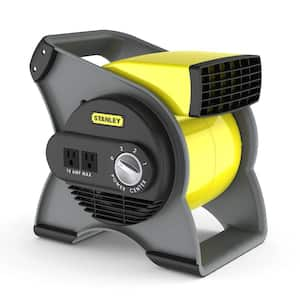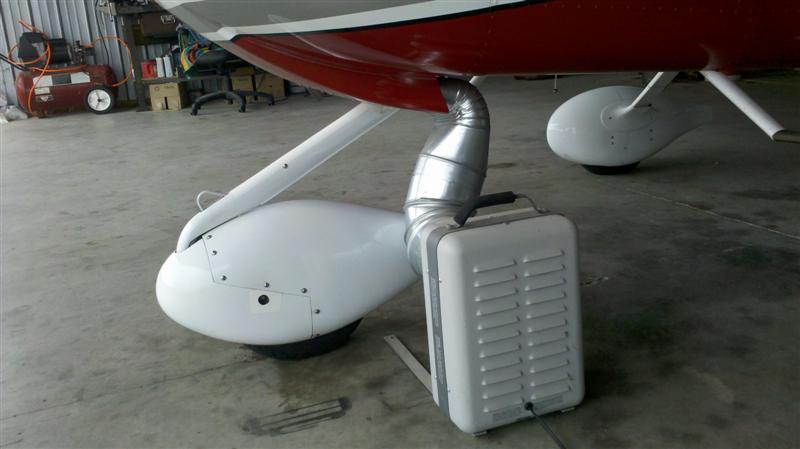blankets with characters from warm climates work better. The Dora the explorer blanket is the best you can get.
Ya got me beat there sir......


blankets with characters from warm climates work better. The Dora the explorer blanket is the best you can get.


How many days/ weeks/ months does it take to evaporate and diffuse all of the moisture out a skinny little tube that is several feet long? There is a lot of water inside the engine.
Any comments from the experts on using a warm air blower like this with a piece of aluminum ducting into the bottom of the cowl blowing relatively dry 75F air into the engine compartment all the time?


blankets with characters from warm climates work better. The Dora the explorer blanket is the best you can get.
I leave mine plugged in all winter.
But I also run an engine dehumidifier as well.
Flav
Gets it warmer, according to the JPI in my current non-Tanis Tiger versus the JPI in my former Tanis-equipped Cheetah. If I set it right, the oil and CH temps will be up in the 70's at even about a 4/10 heat setting on the blower. Also, purchase and installation of a Tanis or Reiff pad/cylinder system costs about eight times what this baby did.
Many desiccants change color once they're charged with liquid. Can you tell if the dehumidifier is actually absorbing anything?
A conventional dehumidifier spits out the water it's removed from the air.
75F is the green arc in my plane, and if I set the heater right, it will be there even without a blanket (but it's easier with).Put a blanket over your engine with the Tanis (which is the right way to do it) and your temps will be way higher. The 310 is warm enough that the oil temps are in the green and it needs a hot start technique.
No pics but old sleeping bags from the thrift store work very well, too.
Many desiccants change color once they're charged with liquid. Can you tell if the dehumidifier is actually absorbing anything?
What a horrible website.
Remember - The corrosion rate doubles every 18 degF you raise the temperature.
Again, only if all else is equal. By encouraging moisture to escape from the engine and not be on the engine's internal surfaces, I think I'm more than making up for the higher temperature.

I agree. Best would be before the engine cools down after landing. Aircraft engines would really benefit from positive crankcase ventilation - (like cars have for the last 40 years). I wonder why they don't?Again, only if all else is equal. By encouraging moisture to escape from the engine and not be on the engine's internal surfaces, I think I'm more than making up for the higher temperature.
I agree. Best would be before the engine cools down after landing. Aircraft engines would really benefit from positive crankcase ventilation - (like cars have for the last 40 years). I wonder why they don't?

PCV is an emission control. No engine "benefits" from PCV it is bad for the engine in every way. On the engines we build, we never install PCV where it is not required.I agree. Best would be before the engine cools down after landing. Aircraft engines would really benefit from positive crankcase ventilation - (like cars have for the last 40 years). I wonder why they don't?
PCV is an emission control. No engine "benefits" from PCV it is bad for the engine in every way. On the engines we build, we never install PCV where it is not required.
no, it does the opposite. It retains water and chemicals inside the engine which would otherwise be purged overboard, making the oil both wetter and more acidic. it also leaves recidue in intake components, reduces life of many sensors, and increases crankcase pressure on some engines leading to more leaks.Except that it keeps the crankcase / oil clean and dry and makes engines last much longer. But. other than that, there is no benefit. And, I can sludge up the throttle body which will take 10 or 15 minutes to clean.
no, it does the opposite. It retains water and chemicals inside the engine which would otherwise be purged overboard, making the oil both wetter and more acidic. it also leaves recidue in intake components, reduces life of many sensors, and increases crankcase pressure on some engines leading to more leaks.
other than that, yeah it's great
with the heater plugged in the oil is the warmest part, the camshaft (in the case of a lycoming) the coldest. water is driven out of the oil as you heat it.
How, these heaters do not get hot enough to boil the water. The water will sink to the bottom of the oil and set there.
That means you have a saturated water vapor solution in the air immediately above the oil. That water will condense out somewhere else. Since the solution is saturated at the bottom and there is some non-zero temperature gradient throughout the engine, condensation somewhere is 100% guaranteed.
For people unable to accept basic thermodynamics it is easy anough to prove. Plug in the heater for a couple days and then take off a rocker shaft cover. You will find the inside of the metal cover covered with a fine mist of water. That is what most of the inside of your engine looks like.
water doesn't only sit on the bottom of the oil, there is water in suspended in the oil that constantly comes out and goes back in. As you heat it you drive more out. The phrase that oil and water don't mix is a lie. they don't mix like sugar and water, but oil does indeed hold water in solution.that water you see in the valve covers occurs while flying. NOT as it cools.
I get water in the engines on the test cell. yes the ones that have been freshly overhauled and have only test cell time.
water doesn't only sit on the bottom of the oil, there is water in suspended in the oil that constantly comes out and goes back in. As you heat it you drive more out. The phrase that oil and water don't mix is a lie. they don't mix like sugar and water, but oil does indeed hold water in solution.
 ...... And it is NEVER good news...
...... And it is NEVER good news... .....
.....
Engine heaters are for one purpose and one purpose only, to allow easier starting in cold temps.I know a few guys that leave theirs plugged in during the winter. I met one that told me to plug it into a thermostat so it only comes on if the hanger gets below 50 deg or so. I also know a few that are telling me not too. Is this another one of those "who the hell really knows" deals?
I have always left the engine heaters on farm tractors during the winter and they always start easier with them on.
Is there any real proof of this causing damage to the engine? Is this something that would make flight risky if there was condensation?
It won't when the engine is not running. and if it is, the water will soon boil out.water doesn't only sit on the bottom of the oil, there is water in suspended in the oil that constantly comes out and goes back in. As you heat it you drive more out. The phrase that oil and water don't mix is a lie. they don't mix like sugar and water, but oil does indeed hold water in solution.
That is contrary to everything that I have learned from the GM engineers who were actually involved in testing the original PCV systems in the late '50s (Yes, it was before my time) for the effects on engine durability. According to them, PCV was one of the best things to ever happen for engine durability. But, what would they know, right? They just actually did the testing.no, it does the opposite. It retains water and chemicals inside the engine which would otherwise be purged overboard, making the oil both wetter and more acidic. it also leaves recidue in intake components, reduces life of many sensors, and increases crankcase pressure on some engines leading to more leaks.
other than that, yeah it's great
That is contrary to everything that I have learned from the GM engineers who were actually involved in testing the original PCV systems in the late '50s (Yes, it was before my time) for the effects on engine durability. According to them, PCV was one of the best things to ever happen for engine durability. But, what would they know, right? They just actually did the testing.
same for me I guess, we only design and manufacture the things. Better to rely on heresay from the 50'sBut, what would they know, right? They just actually did the testing.
Turbo Diesels? Whole 'nuther animal I would think.I wonder if it might not have to do with differences between what are primarily naturally aspirated spark ignition engines vs. what are primarily turbocharged diesel engines.
What things?same for me I guess, we only design and manufacture the things. Better to rely on heresay from the 50's
PCV systems and the engines they go onWhat things?
Well the kid (kid to me but he is 40-something) has engineered engines of types petrol, natural gas, and diesel, while working at GM, BMW, and Cat. Maybe he has some insight that runs counter to views of 60 years ago.That is contrary to everything that I have learned from the GM engineers who were actually involved in testing the original PCV systems in the late '50s (Yes, it was before my time) for the effects on engine durability. According to them, PCV was one of the best things to ever happen for engine durability. But, what would they know, right? They just actually did the testing.
Aircraft applications (particularly turbo) wouldn't get fresh air in during climb and not much during cruise - you would rely on descents and taxi time to clean out the crankcase. I have no data on how effective it would or would not be.
I'm not sure how they set up PCV on turbo diesels. Just diverting the flow to prevent it from getting out to the atmosphere would not be good - you really need the fresh air flow into the engine to move the garbage out.
I've always assumed a PCV system would be worthless in aircraft applications for multiple reasons, but primarily due to a lack of vacuum.
